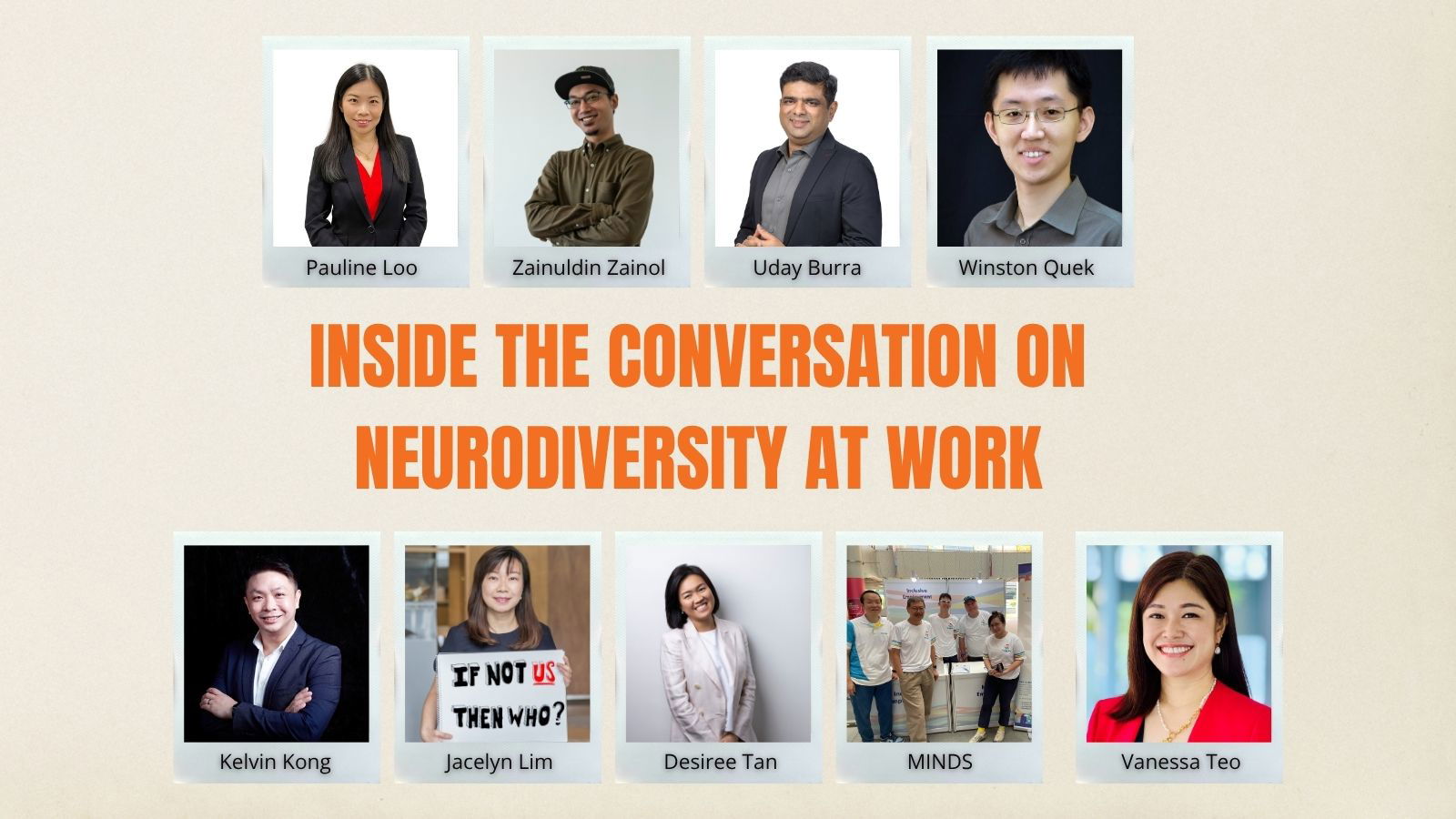share on
Are we mistaking charisma for competence? Are KPIs designed for just one kind of mind? If inclusion is about fairness, why do hiring and performance systems still reward the loudest voice in the room? Umairah Nasir speaks to HR leaders, non-profit advocates, and a parent–HR professional to explore why neurodivergent talent remains overlooked – and what must change.
Neurodiversity is gaining attention in Singapore's workplaces, but meaningful inclusion remains a work in progress. While awareness of conditions such as ADHD, autism, or dyslexia has grown, unconscious bias in hiring and performance management continues to create barriers for neurodivergent individuals.
From job interviews to performance reviews, many traditional processes still reward traits such as small talk, verbal fluency, and social ease. These expectations can disadvantage candidates and employees who think and communicate differently. As a result, organisations risk missing out on high-potential talent simply because they do not fit the conventional mould.
To understand where the gaps lie, Umairah Nasir speaks with HR leaders, non-profit/social service organisations, and a parent who is also a senior HR professional. Together, they shed light on the systems and mindsets that need to change to create more inclusive and supportive workplaces for neurodivergent employees.
HR's points-of-view
Pauline Loo, Nippon Sanso Holdings Corporation
Pauline Loo, Senior Vice President of HR and Regional Hub Head of HR at Nippon Sanso Holdings Corporation, shares how her company is tackling unconscious bias against neurodivergent candidates during hiring and performance management.
Nippon Sanso APAC follows the group’s Global Policy on Respecting Human Rights, which strongly commits to non-discrimination and inclusive employment practices. This policy covers respect for people of all abilities and neurological profiles and actively aims to remove unfair bias in the workplace.
To address risks of screening out neurodiverse candidates who may not fit the conventional idea of being ‘personable’ in interviews, Nippon Sanso has introduced structured interview questionnaires. These ensure hiring decisions focus on job-relevant skills. They also developed an interviewer toolkit designed to reduce unconscious bias, especially the tendency to favour neurotypical behaviours during recruitment.
Loo says: "We believe building inclusive teams starts with inclusive hiring — and we are proud to keep progressing in that direction."
Regarding performance reviews, Pauline notes that many traditional KPIs were created with neurotypical norms in mind and may unintentionally create barriers for neurodivergent talent. For example, competencies such as “cultivate workplace relationship” or “communication” can overemphasise verbal fluency or social ease rather than actual work quality or impact.
To be more inclusive, Nippon Sanso APAC is shifting towards outcome-based KPIs that value innovation, problem-solving and strengths often found in neurodivergent individuals. Managers receive a performance management toolkit and training to help recognise and support diverse working styles.
Loo explains: "Our diversity and inclusion practices do not stop at talent acquisition but we are striving to embed it in how we measure employees’ performance, providing our employees with support, and growing their potential."
For HR leaders unsure where to start in rethinking hiring and performance reviews through a neurodiversity lens, Loo recommends beginning with a neuro-inclusion audit. She advised asking key questions such as:
- Are job descriptions unintentionally exclusionary?
- Do our interviews reward charisma over skills competence?
- Are our KPIs built around neurotypical behaviors?
Inclusion does not mean that we need to be lowering the bar, but rather what we are doing is in widening the gate. Together, let’s build workplaces where every kind of mind can thrive.
Uday Burra, Nokia
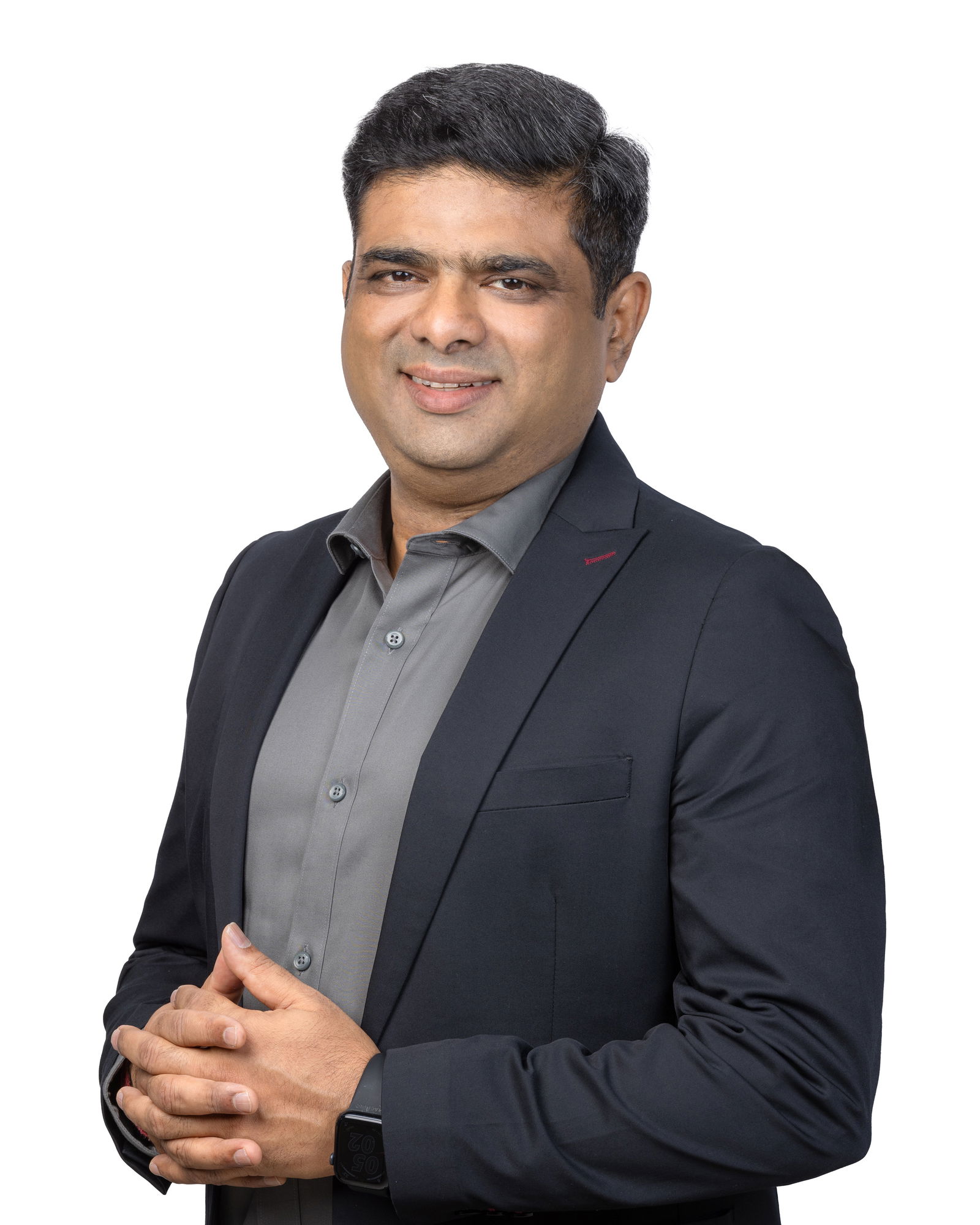
All views shared by Uday Burra are from his personal opinion and may not represent any organisational views.
For Uday Burra, Head of People Care - APJ & India, Nokia addressing unconscious bias in hiring and performance reviews is not just about fixing processes. It is about creating a culture where inclusion becomes second nature.
He shares that while there is growing awareness of neurodiversity, most organisations, and society at large, still have a long way to go.
Conversations around conditions such as ADHD or dyslexia have only gained attention in recent years. When Uday began his career in the 1990s, these topics were rarely discussed. Today, they are slowly entering the mainstream but there remains a significant gap in understanding.
You cannot have a particular way of inclusion only at the entry gate.
Real change, he says, happens when inclusive values are embedded in daily work, from team projects to performance assessments. One-off training for hiring managers is not enough. Instead, regular conversations around unconscious bias are essential to make inclusion part of the organisational fabric.
On performance reviews, Uday believes the conversation must begin not with KPIs, but with awareness. “If our discussion starts with KPIs, we are already losing the battle.” He adds that leaders should first ask themselves if they are prepared to provide the support and environment that allows neurodivergent individuals to thrive.
When asked why conversations about neuroinclusion are still limited, Uday shares that it may come down to prioritisation. “I don’t think people are running away from these conversations,” he says. He notes that while most leaders likely have good intentions, the topic may not yet be high on their list of priorities.
He also encourages HR leaders to work with their broader ecosystem including search firms to create more awareness. One practical step is to identify roles that could offer a smoother entry point, creating space for individuals to build confidence and grow from there.
His advice is clear: start small but start somewhere.
“This will take investment of mind space and intent,” he says. For inclusion to be truly meaningful, it must move beyond good intentions and into consistent, everyday action.
Kelvin Kong, Lightstorm
At Lightstorm, efforts to build an inclusive environment for neurodiverse individuals start with the right organisational structure. Kelvin Kong, Global Chief People Officer, explains that the company begins by defining the behaviours, skills, and mindset needed for each role, then matches them to the right talent.
"This is critical to identify which roles can be best performed by neurodiverse candidates; in fact, if done well, neurodiverse candidates can outperform neurotypical candidates."
Much of Lightstorm’s focus is on helping business leaders translate strategy into execution by clarifying go-to-market priorities and defining role requirements. Once in place, this foundation informs both hiring and performance processes. Leaders are then equipped with the mindset needed to hire without bias.
Kong notes that "most traditional performance systems do favour neurotypical employees," as assessments often hinge on perceived communication skills, collaboration, and adherence to behavioural norms – areas that neurodivergent individuals may struggle with.
To address this, Lightstorm has implemented several changes. First, HR teams are trained to distinguish between performance and behaviour, allowing the company to focus on functional output and impact, regardless of personal working styles. Managers are also trained to set clear goals and manage expectations effectively. Kong stresses that inclusive success begins with goal setting: when goals are defined properly, and managers coach neurodiverse employees with empathy and consistency, "their functional output can go beyond expectations."
Second, the company encourages a focus on intent rather than action when it comes to behaviour. Leaders and employees are reminded that neurodiverse individuals may communicate differently or face unique challenges and strengths.
Kong shares that Lightstorm’s values are designed to “look at a person’s heart more than their actions,” shifting focus from comparison to customer impact. By championing ownership, integrity, and bold leadership – values aligned with its complex, innovation-driven environment – Lightstorm ensures neurodiverse employees are assessed fairly and their strengths matched to business needs.
For HR leaders just starting out, Kong advises beginning with a deep understanding of the business, then supporting leaders in building the right organisational requirements. These, he says, should be translated into clear, easy-to-understand skills, behaviours, and mindsets – intentionally matched to a diverse talent pool.
Desiree Tan, Ubisoft

At Ubisoft, efforts to build a more neuroinclusive workplace begin with structured training and a focus on accessibility throughout the employee journey.
To reduce the risk of screening out neurodiverse candidates who may not fit traditional ideas of being personable, the company has implemented a comprehensive training programme for all talent acquisition specialists. According to Desiree Tan, HR Director at Ubisoft, this internal training was developed by a team dedicated to neurodiversity and inclusion, and covers topics such as different communication styles, sensory sensitivities, and recognising bias in CVs and interviews.
"This training really emphasises on the importance of skill evaluation and creating an accessible environment for the interview process."
In addition, Ubisoft has created a guide for neurodivergent candidates on its corporate website, offering resources to support them through the recruitment process. The organisation also acknowledges that traditional performance evaluation methods may unintentionally favour neurotypical behaviours. In response, a separate comprehensive internal training for HR and managers has been developed, focusing on three key areas:
- communication,
- work environment accessibility, and
- evaluation.
Within evaluation, the training offers tips and tools to help managers focus on individual strengths and remove barriers that may prevent employees from showing their abilities.
Ubisoft has also launched an e-learning module on neuroinclusive communication, which immerses participants in workplace scenarios from a neurodivergent perspective. Tan notes that her HR team in Singapore found the training helpful in building awareness and in supporting people managers to have more thoughtful and inclusive conversations. It also helped the team better understand how to partner with managers who may be unsure about how to support an employee who has not formally disclosed their condition but may still need adjustments.
She adds that the gaming industry requires many skillsets and offers a wide variety of roles. This is because the strengths of neurodivergent individuals align well with the skills needed in our field.
Although there is no structured training for neurodivergent employees in Singapore, internal resources are available, including a company intranet portal and Teams channels that offer both public knowledge sharing and more private peer discussions. Those who have disclosed their conditions to HR or managers have shared that they feel supported, with thoughtful adjustments such as shorter, more structured meetings or quieter workspaces to accommodate needs like shorter attention spans or sound sensitivity.
The NGOs' points-of-view
Unlocking ADHD
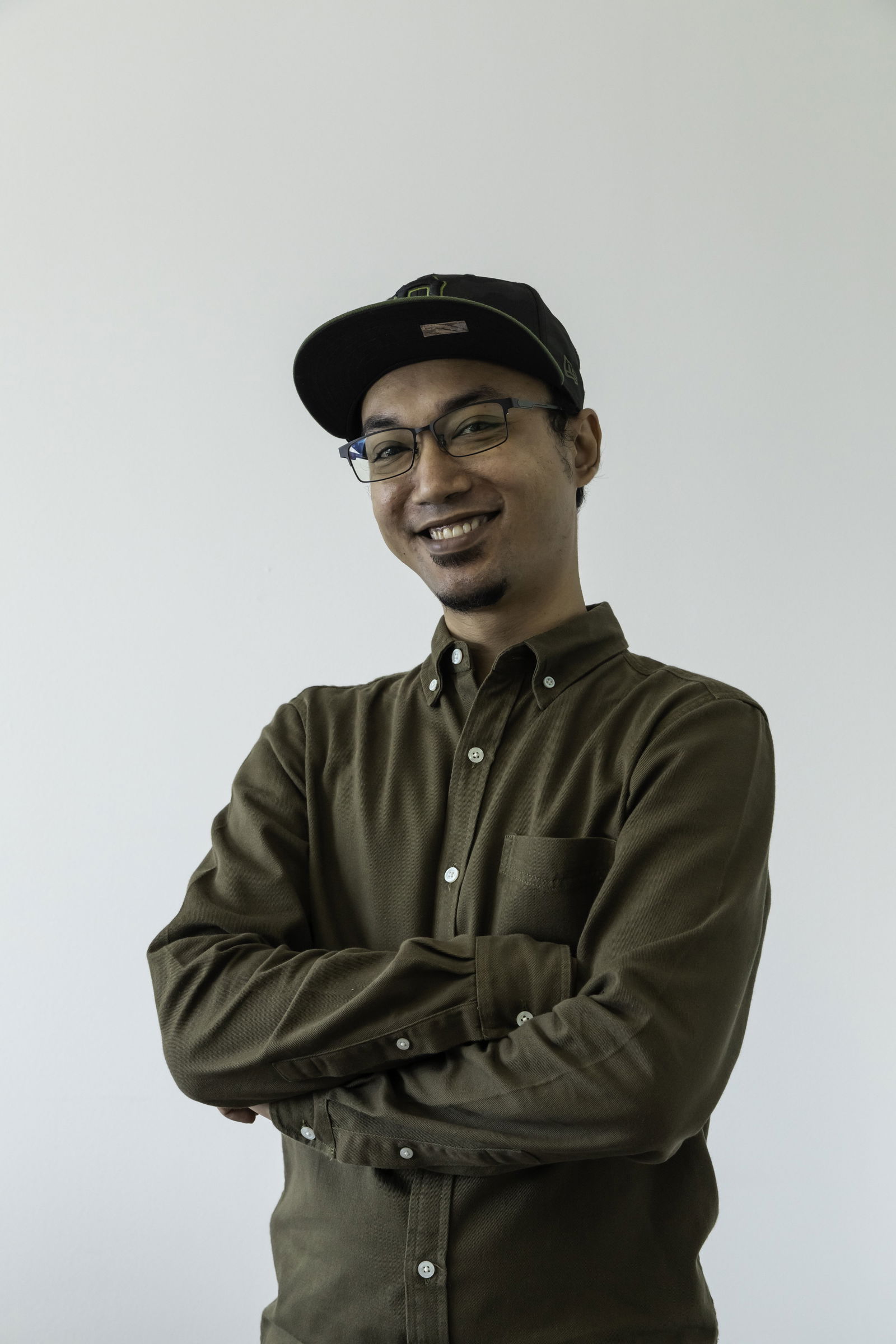
One of the key challenges neurodivergent individuals face when seeking employment is that the hiring process often emphasises presentation over potential. As Zainuldin Zainol, Marketing Communications and Partnerships Manager, Unlocking ADHD, explains, traditional interviews tend to focus heavily on how polished a candidate appears. This includes their body language, eye contact, and ability to articulate, which may disadvantage those with social anxiety, executive dysfunction, or sensory sensitivities. These individuals may struggle with conventional expectations but could excel in areas such as creativity, systems thinking, and problem solving.
Even after being hired, sustaining performance in a neurotypical-centric environment can be difficult. According to Zainuldin, traditional KPIs often reward consistency and linear output, which may not align with how individuals with ADHD function. Many perform best in short bursts of high energy and productivity, followed by periods of low stimulation. Misunderstandings can arise if colleagues misinterpret forgetfulness or a need for reminders as carelessness.
He adds that open conversations and psychological safety are key to ensuring neurodivergent employees do not feel compelled to mask their struggles, which may otherwise lead to burnout and disengagement.
To create a fairer process, Zainuldin suggests rethinking the concept of professionalism. "Being professional shouldn’t mean being neurotypical," he notes. Instead of relying solely on face-to-face interviews, employers could explore practical assessments, written responses, or asynchronous formats such as video introductions.
Performance reviews also need reworking. A one-size-fits-all KPI can be harmful, he cautioned, and called for co-developed goals and flexible feedback channels — visual, verbal or written that allow employees to play to their strengths. “Inclusion thrives on cognitive diversity,” he says.
On a systems level, he urges the government to embed neurodiversity into broader workplace equity and mental health strategies, and to incentivise inclusive hiring and retention practices.
Ultimately, creating inclusive workplaces is a two-way effort. While companies must adjust their structures, neurodivergent individuals can also benefit from support in managing areas such as time management, organisation and emotional regulation. Unlocking ADHD offers such guidance through its new Support Hub, which includes counselling, coaching, and educational resources for employers and caregivers.
Reflecting on the need for understanding and acceptance, Zainuldin shares an analogy:
You can’t catch fireflies with your bare hands. Some will fly away. Just let them thrive in the way they want to, not in the way you want them to. That’s not a mould you want to fit them into. Just love them for who they are.
“In the end, it’s about meeting in the middle,” he affirms. “We must create environments where neurodivergent individuals can thrive, not conform.”
Dyslexia Association of Singapore

Winston Quek, Lead Psychologist at the Dyslexia Association of Singapore (DAS), highlights the key challenges neurodivergent individuals face in Singapore’s job market – starting with the hiring process.
"Acing an interview typically requires verbal fluency, quick thinking, and eye contact," he explains. These are skills many neurodivergent individuals – including those with dyslexia, ADHD, or autism – may find difficult. As a result, they risk being unfairly screened out despite having the required hard skills.
Quek notes that many hiring practices remain rigid, relying on timed tests, standardised assessments, or written communication – methods that "disproportionately disadvantage neurodivergent individuals." Even after securing a job, further barriers persist. Performance expectations and KPIs are often shaped around neurotypical norms, placing emphasis on speed and multitasking over creativity, problem-solving, or long-term impact. For instance, dyslexic employees may generate fresh ideas but struggle to articulate them quickly in writing, putting them at a disadvantage.
A lack of employer awareness compounds the issue. Many neurodivergent adults in Singapore remain undiagnosed or unsupported, and their challenges are often misunderstood as poor performance or disengagement. While awareness is growing, continued advocacy remains key to driving understanding and inclusion.
Crucially, Quek underscores that inclusion should not be seen as charity, but as a recognition of diverse excellence. He points to a DAS study revealing that 26% of entrepreneurs in Singapore are dyslexic, many of whom thrive in self-employment by leveraging strengths in creativity and problem-solving.
To create fairer systems, Quek recommends alternative assessments such as work samples, untimed tasks, and project-based assignments to better showcase candidates’ strengths. He also suggests adapting KPIs to reflect diverse contributions – including creativity and progress – rather than just speed or quantity.
Tailored workplace accommodations are vital too. These may include quiet spaces, flexible work arrangements, buddy systems, coaching, and assistive technologies. Equipping managers and teams with neurodiversity training can also foster a more inclusive culture.
Government and public institutions have a critical role to play. Policies that protect confidentiality and uphold the rights of those who disclose neurodivergence can encourage employees to seek support without fear. Incentives such as grants or formal recognition can motivate companies to adopt inclusive practices, while public education campaigns can help reshape societal perceptions. Greater awareness may also prompt undiagnosed individuals to seek professional evaluation, which is key to identifying support needs.
Quek concludes:
Policies by government agencies and public institutions should also promote the utility of psychological assessments while advocating for fairer hiring processes and inclusivity in the workplace.
Autism Resource Centre (Singapore)
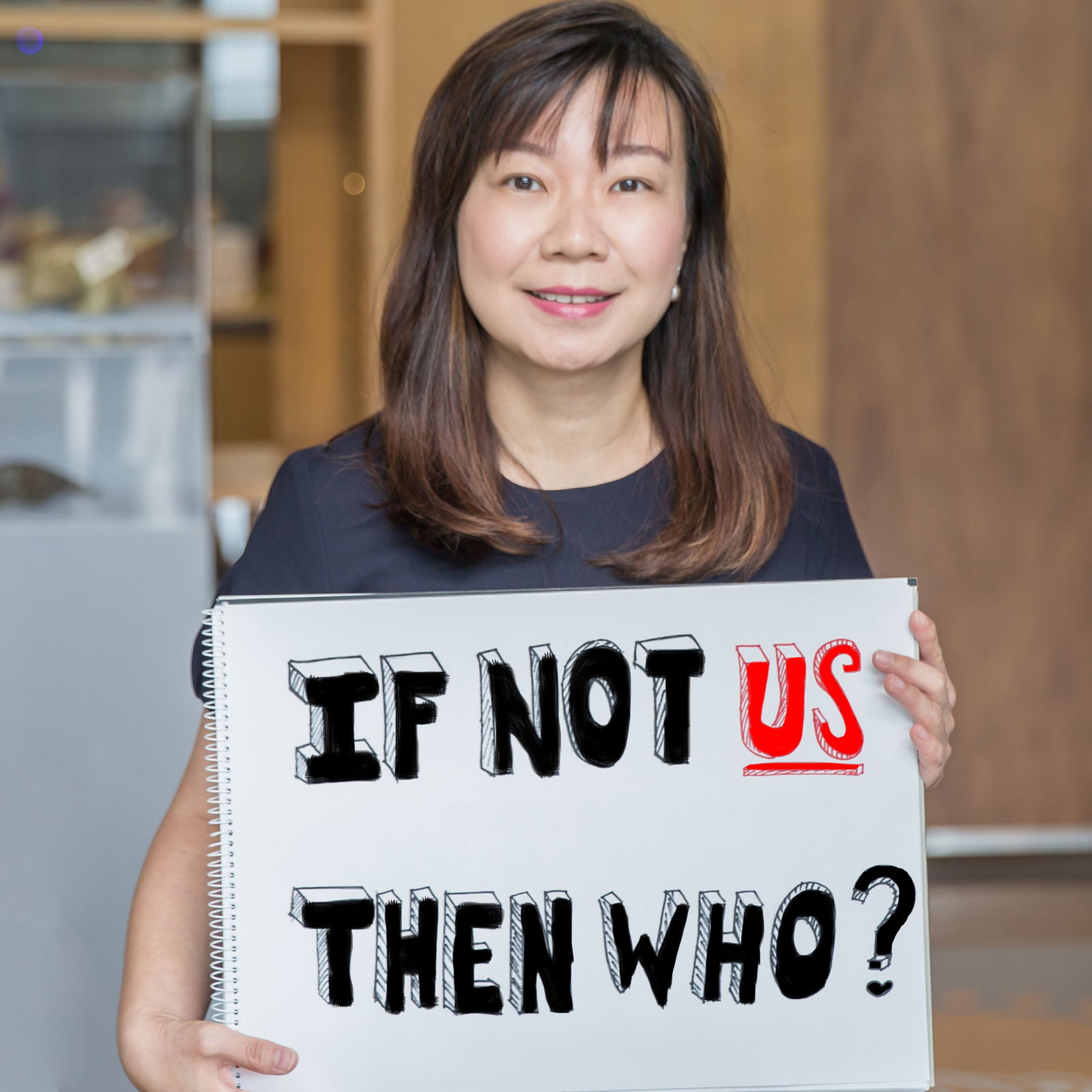
For individuals on the autism spectrum, the biggest barriers to meaningful employment often lie in two areas, shares Jacelyn Lim, Executive Director of Autism Resource Centre (Singapore), better known as ARC(S).
The first challenge lies with employers. While there are those who are kind and well-intentioned, many lack the knowledge or know-how to support employees on the autism spectrum. Lim noted that without the right partnerships with domain expert agencies, it is difficult for employers to sustain efforts to integrate persons with disabilities (PWDs) into the workplace.
The second challenge relates to the individuals themselves, who may face difficulties in social skills, communication, and flexible thinking. These areas can affect their ability to find or keep a job. Lim says that some may not be adequately prepared or able to integrate into the workplace without proper training and support.
To improve employability, ARC(S) launched the Employability and Employment Centre (E2C) in 2012. The centre provides training and support to help individuals on the autism spectrum develop job readiness skills, get matched with suitable roles, and receive job support to cope with workplace demands and changes.
“While not everyone may be suitable for work, it is important that we focus on their strengths and what they can do, not what they cannot do,” says Lim.
Since its founding, E2C has worked with more than 60 employer partners across various industries and created over 600 job placements. Close to 90% of these individuals have held their jobs for more than one year.
Lim acknowledges that Singapore has made progress through government initiatives such as the Enabling Employment Credit and Open Door Programme, as well as job placement and support programmes by disability agencies. These efforts support the Enabling Masterplan 2030 goal of raising the PWD employment rate to 40%. However, she says, more can still be done.
She encourages employers to partner with specialised agencies such as E2C, which provide the structured support and expertise needed for individuals on the autism spectrum to succeed at work. Success often comes from a good job fit that aligns with the individual's strengths, targeted training in hard and soft skills, inclusive teams, and ongoing job support from agencies with disability knowledge. Employers can also consider alternatives to traditional interviews, such as task simulations or portfolio reviews.
Lim adds that clear performance expectations and regular, structured feedback can support different communication and information processing styles. She emphasises the need for public action to remove barriers such as negative attitudes and to create lasting change.
Everyone has a part to play to build a more inclusive Singapore.
Movement for the Intellectually Disabled of Singapore (MINDS)
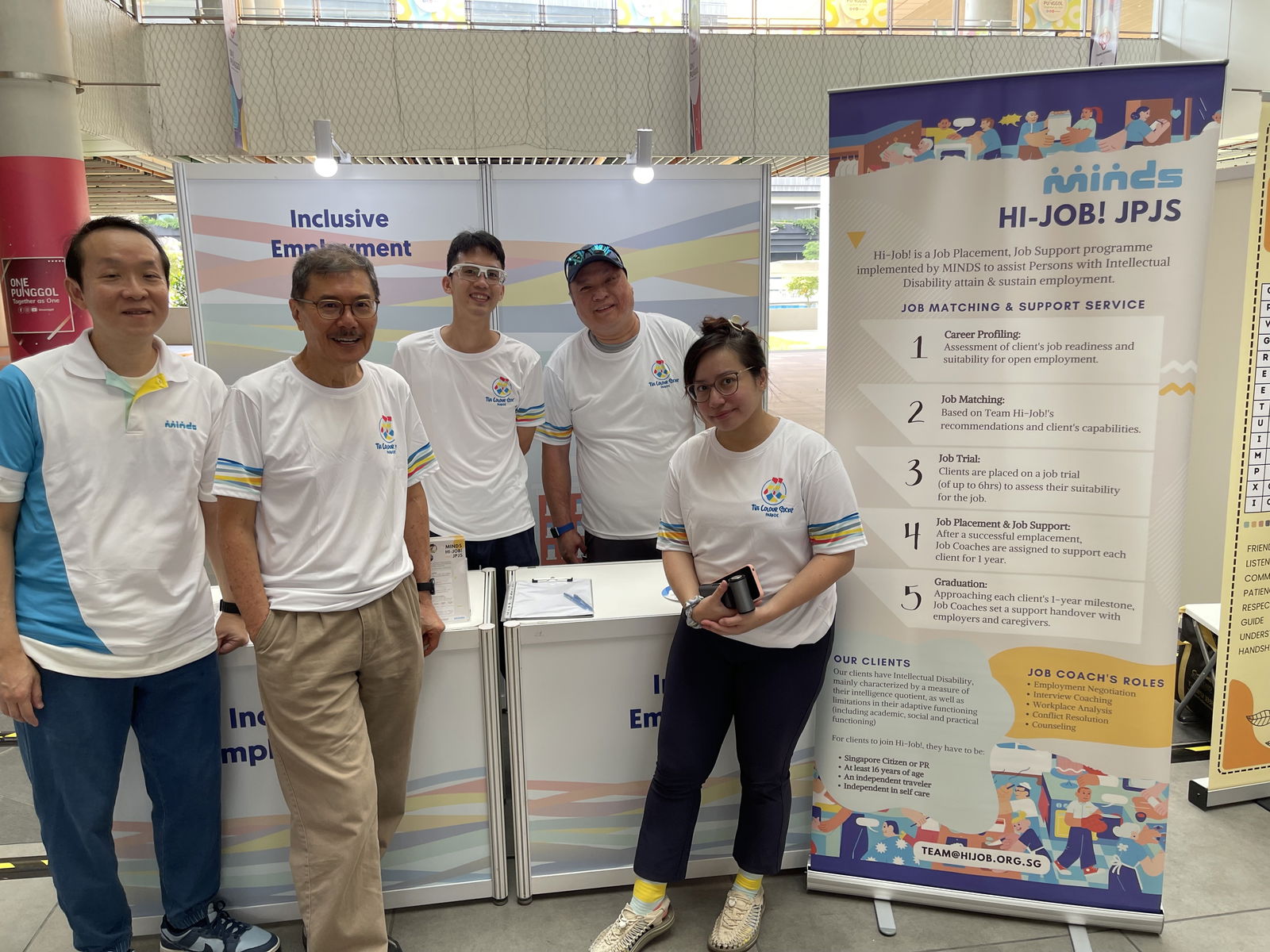
Employment can present hidden barriers for persons with intellectual disabilities (PWIDs), beginning from how job roles are designed to how performance is evaluated.
As shared by MINDS, PWIDs may face challenges with multi-tasking, adapting to change, and communication. Some may struggle with interpreting social cues, understanding boundaries, or navigating appropriate behaviour in workplace settings, which can affect how they interact with colleagues and integrate into teams.
From the caregiver’s perspective, another layer of complexity arises. In some cases, PWIDs may not have the mental capacity to make employment-related decisions independently, and caregivers step in to support them. However, employers may be unsure or hesitant to engage directly with caregivers, which can result in a lack of clarity or alignment across parties.
Employers, particularly those in traditional industries facing labour shortages, may also be constrained by limited resources. In these contexts, roles often require multi-tasking or rapid adaptation, making it harder to allocate tasks that are suitable and sustainable for PWIDs. In addition, misconceptions about their abilities and the absence of natural workplace support can further reduce access to job opportunities.
To address these gaps, MINDS recommends redesigning job roles with greater structure and routine, breaking tasks into clear, teachable steps. Employers are encouraged to work with organisations such as MINDS, SG Enable, SPD, or APSN to ensure good job matching and support.
Workplace training is also essential. “Conduct disability awareness workshops to educate managers and colleagues,” the team shares.
Workshops can help build empathy, foster understanding, and encourage appropriate communication. These are important as supervisors should be equipped to give clear instructions, set realistic expectations, and provide constructive feedback.
To better support PWIDs in the workplace, organisations can start by simplifying job descriptions and application processes. Focus should be placed on essential tasks and skills, avoiding technical jargon. Recruitment can also include work trials or informal interviews in quiet, comfortable settings, with visuals and support persons present if needed.
During onboarding, clear instructions, step-by-step guides, and visual aids can help employees understand their tasks and environment. Assigning a buddy or mentor in the early days can ease the transition, especially for those new to workplace routines.
Employers are also encouraged to create accessible work environments by offering sensory-friendly spaces and consistent schedules. Advance notice of changes and visual task lists can reinforce predictability.
Inclusive hiring should be embedded in company values and supported by clear HR policies, such as allowing time off for medical appointments and tailoring performance reviews to achievable goals.
Importantly, small steps such as starting with part-time roles can help organisations build confidence, refine processes, and foster co-worker buy-in before scaling up efforts.
As MINDS highlights, “PWIDs represent a diverse community within a broader minority group. There is an opportunity to foster greater understanding in society and to challenge common misconceptions about their experiences.
"By cultivating empathy, patience, and respect, we can work towards building a more inclusive and supportive community for everyone."
The parent's point-of-view
All views shared by Vanessa Teo are from her personal perspective based on experience, and not representative of ST Engineering.
Vanessa Teo, Senior Vice President of Global Human Resources at ST Engineering, shares her perspective as both a HR leader and a parent of two neurodivergent children. Her sons, aged 10 and 12, were diagnosed with dyslexia, a language-based learning difference that affects reading, writing, and processing written information.
“In school settings, accommodations such as extended time during exams are common and help ensure equitable assessment,” she notes. She emphasises that similar considerations are needed in the workplace. For instance, recognising different processing speeds and learning styles is important not just in education, but also in recruitment and performance management.
Teo points out that written assessments, which are common in hiring processes, can disadvantage individuals with dyslexia. Alternatives such as verbal instructions or visual aids could better support candidates with different needs. She added that the growing use of AI tools such as speech-to-text and assistive writing software is helping reduce such barriers.
In interviews, she believes employers should move beyond a narrow focus on academic results. “While academic achievements do matter, they don’t reflect qualities like creativity, problem-solving, resilience, or teamwork, all of which are equally critical to success,” she says. Looking at leadership experiences, co-curricular involvement, or traits such as perseverance could provide a more complete picture of a candidate’s potential.
Teo acknowledges her concern that employers might misinterpret how neurodivergent candidates behave or communicate, especially when academic transcripts are viewed as the main indicator of potential. She encourages companies to consider holistic methods, such as structured interviews or work-based tasks, to give candidates the opportunity to demonstrate their strengths.
She also highlights the need to educate hiring managers on the neurodiversity spectrum. Each condition, whether dyslexia, ADHD, autism, or dyscalculia presents different strengths and support needs. She stresses the importance of psychological safety and mental health, noting that some individuals may struggle with confidence due to earlier negative experiences.
Inclusion should not be a checkbox exercise.
"It must be embedded into how we design work, evaluate performance, and develop talent,” she says. Positive signs include schools with more special education support, and workplaces adopting assistive technologies and more flexible practices.
As both a HR leader and a parent, Teo believes that inclusive employment means embracing cognitive diversity and preparing managers to lead with empathy. She thinks about the future of work not only for today’s workforce, but also for the next generation, including her own children.
“Inclusion isn’t just an HR responsibility. It’s something every leader must own.”
True neuroinclusion begins with challenging the way we define merit, performance, and potential. Inclusion is not about lowering standards but about widening access. By shifting the lens through which we evaluate people, workplaces can move from good intentions to meaningful action. Every mind deserves a fair chance to thrive.
Images / Provided
ALSO READ: Neuroinclusive by design: Building workplaces where all minds can thrive
share on

